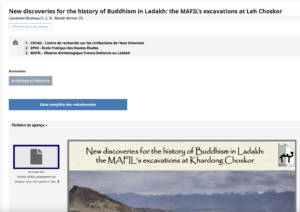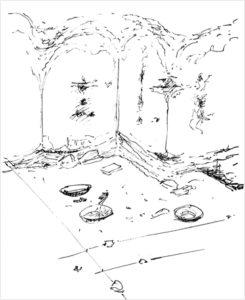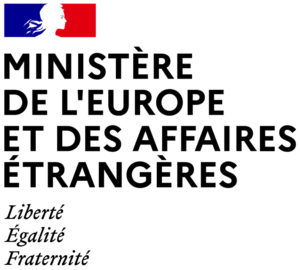The Choskor site (3800 m), to which the MAFIL dedicated phase 2, is located a few kilometres north of Leh. A first documentation campaign was carried out there in 2015 and an initial excavation campaign took place in 2016. This confirmed that the main building on the site is a Buddhist temple dating from the first half of the 11th century AD. Apart from a handful of inscriptions, rock carvings and another cult monument (namely the ruined stūpa at Tirisa in the Nubra, studied by the MAFIL in 2013) the mud-brick temple at Leh Choskor constitutes one of the oldest testimonies to Buddhism in Ladakh. The architecture and remains uncovered (fragments of polychrome mud statuary, votive objects, etc.) provide the first irrefutable material evidence of the cultural links between Ladakh and the western Tibetan kingdom (the Guge-Purang kingdoms), which were at the origin of the revival of Indo-Tibetan Buddhism at the beginning of the 2nd millennium (or ‘Later Spread of Buddhism’ known as phyi dar in Tibetan literature). Except for the ruins of Nyarma, these links were known only from late textual sources.
The three campaigns in Leh Choskor archaeological zone (2018, 2019 and 2020), which comprises around 140 structures spread over 2,4 hectares, were to provide a better understanding of how ancient Buddhism was established and spread in Ladakh, and more widely in the Western Himalayas. A small number of structures (three temples, two residential buildings and probable burials) had been selected for excavation to help identify the period when the site was founded, occupied and abandoned. Excavation of the various structures were to contribute to several research themes, namely: the study of Buddhist art (architecture, sculpture and painting); the study of Buddhist rituals; the study of the socio-economic system of monastic communities; and the study of funerary rites. The excavation of the Leh Choskor site was part of a wider research programme into ancient Buddhism in central Ladakh. The ruins of temples, stūpa, Buddhist stelae and bas-reliefs, as well as funerary sites in the Leh valley, were to be documented and analysed.








